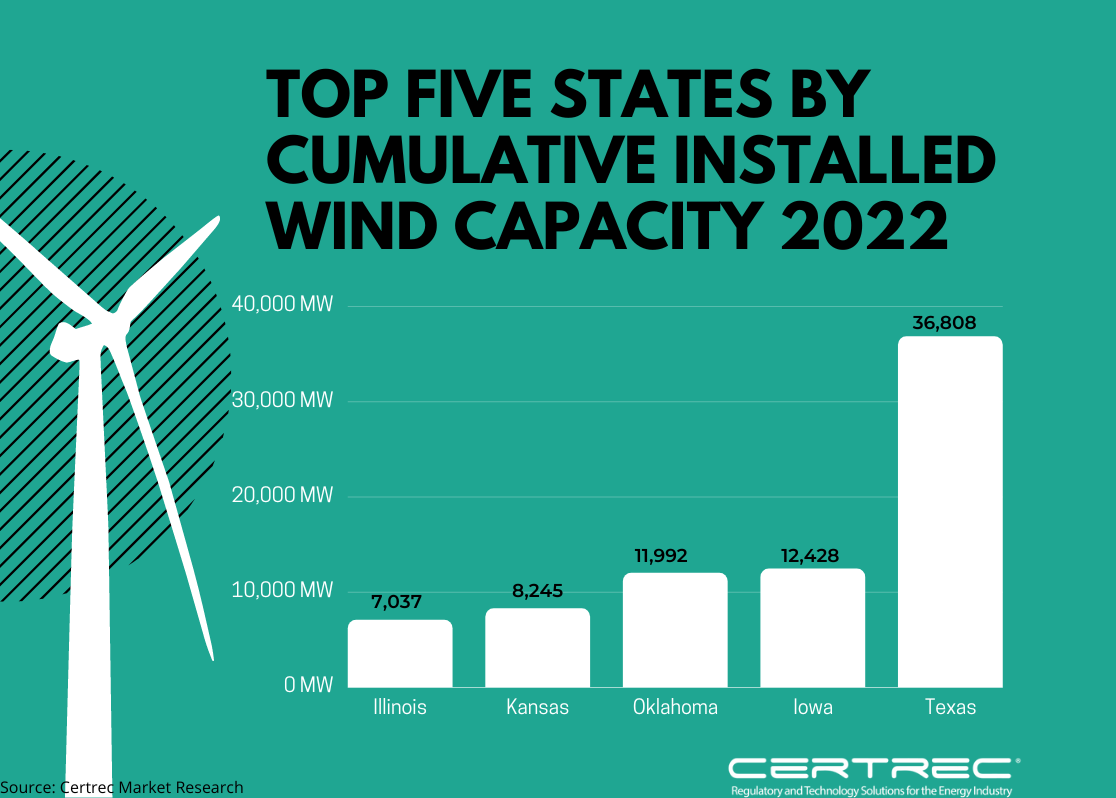Wind Market Data
A surge in demand for renewable energy sources has created significant growth in the wind energy market over the past two decades. According to Allied Market Research, the global wind energy market was valued at $62.1 billion in 2019, and is projected to reach $127.2 billion by 2027.
This surge is largely due to the increased demand for clean, renewable energy sources. Countries like the United States and China are actively investing in wind energy in an effort to cut back CO2 emissions.
In 2021, the U.S. wind industry installed 13,413 megawatts (MW) of new wind capacity. This brought the cumulative total to 135,886 MW. This new wind capacity places the U.S. as having the second highest installed-capacity, behind China. The Global Wind Energy Council measures that global wind power capacity is now up to 743 GW. This helps avoid over 1.1 billion tons of CO2 – globally.
The History of Wind Energy in the United States
Originally, windmills were used by American colonists and ranchers to grind grain, pump water, and cut wood at sawmills. Thousands of these windmills were installed as the western United States was settled. By the late 1800s and early 1900s, small wind turbines were widely used to generate energy.
However, while rural electrification programs in the 1930s extended power lines to most farms and ranches, the number of wind turbines and wind pumps declined across the country. The use of wind energy in the U.S. would remain marginal until the 1970s.
In the 70s, oil shortages necessitated that the U.S. find alternate forms of energy to meet the demands of the American population. Investments in wind energy increased and thousands of wind turbines were installed in California by the 1980s.
By the 1990s, the U.S. federal government established incentives to increase the amount of energy generated from wind. The world was moving toward “green power” wind energy, along with other renewable energy sources. However, these energy sources were still expensive to make. Thus, significant research and developments had to take place to reduce costs. With the efforts made, according to the U.S. Energy Information Administration, the percentage of U.S electricity generated from wind energy has increased from 1% in 1990 to 9.2% in 2021.
How do Wind Turbines Work?
Using the aerodynamic force from the rotor blades, a wind turbine turns wind energy into electricity. Wind flows across the plate, decreasing the air pressure on one side of the blade. The difference in air pressure across the two sides creates both lift and drag. The lift force is stronger than the drag, causing the rotor to spin. The rotor is connected to a generator and this is how it generates
Turbines generate this energy both on land, and on offshore wind farms. Because of their consistent wind flow, offshore wind farms typically generate more energy than their onshore counterparts. Also, there are two types of wind turbines; horizontal-axis and vertical-axis turbines. You can learn more about how a Wind Turbine Works on Energy.gov.
The five states with the most installed wind capacity are:
- Texas (36,808 MW)
- Iowa (12,428 MW)
- Oklahoma (11,992 MW)
- Kansas (8,245 MW)
- Illinois (7,037 MW)
Want more information on wind farms?
Click here to see that largest wind farms in the United States.













